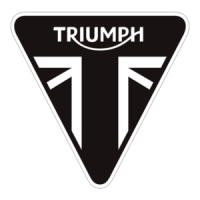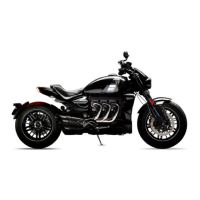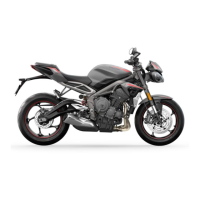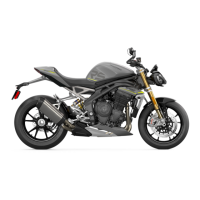Tampering with Noise Control
System Prohibited
Owners are warned that the law may prohibit:
a)
The removal or rendering inoperative by any
person other than for purposes of maintenance,
repair or replacement, of any device or element
of design incorporated into any new vehicle for
the purpose of noise control prior to its sale or
delivery to the ultimate purchaser or while it is
in
use; and
b)
the use of the vehicle after such device or
element of design has been removed or rendered
inoperative by any person.
References
References to the left-hand or right-hand side given
in
this manual are made when viewing the motorcycle
from the
rear.
Operations covered
in
this manual do not always
include reference to testing the motorcycle after
repair. It
is
essential that work is inspected and tested
after completion and if necessary a road test of the
motorcycle is carried out particularly where safety
related items are concerned.
Dimensions
The dimensions quoted are to design engineering
specification with service limits where applicable.
During the period of running-in from
new,
certain
adjustments may vary from the specification figures
given
in
this manual. These will
be
reset
by
the dealer
at the 500
mile/BOO
km
service, and thereafter should
be
maintained at the figures specified
in
this manual.
Repairs and Replacements
Before removal and disassembly, thoroughly clean the
motorcycle. Any dirt entering the engine or other parts
will work
as
an
abrasive and shorten the life of the
motorcycle. Particular attention should
be
paid when
installing a new part, that any dust or metal filings are
cleared from the immediate area.
Force
Common sense should dictate how much force is
necessary
in
assembly and disassembly. If a part
seems especially difficult to remove or install, stop
and examine what may
be
causing the problem.
Never lever a component as this will cause damage
both to the component itself
and
to the surface being
levered against.
Introduction
Whenever tapping to aid removal of
an
item is
necessary, tap lightly using a hide or plastic faced
mallet.
Edges
Watch for sharp edges, especially during engine
disassembly and assembly. Protect the hands with
industrial quality gloves.
When replacement parts are required, it is essential
that only genuine Triumph parts are used.
Safety features and corrosion prevention treatments
embodied
in
the motorcycle may
be
impaired if other
than genuine Triumph parts are fitted.
In
certain
territories, legislation prohibits the fitting of parts not
to the manufacturer's specification.
Tightening procedure
Generally, when installing a part with several bolts,
nuts or screws, they should all
be
started
in
their
holes and tightened to a snug fit, evenly and
in
a
cross pattern. This
is
to avoid distortion of the part
and/or causing gas or
oil
leakage. Conversely, bolts,
nuts, or screws, should all be loosened
(in
sequence if
specified)
by
about a quarter of a turn and then
removed.
Where there
is
a tightening sequence specified
in
this
Service Manual, the bolts, nuts, or screws must
be
tightened
in
the order and
by
the method indicated.
Torque wrench setting figures given
in
this Manual
must
be
observed. The torque tools used must
be
of
accurate calibration.
Locking devices, where specified, must
be
fitted. If the
efficiency of a locking device is impaired during
removal it must
be
renewed. This applies particularly
to micro-encapsulated fixings which must always
be
replaced if disturbed. Where necessary, the text
in
this manual will indicate where such a fixing is used.
~.
Service Manual - Rocket III
v

